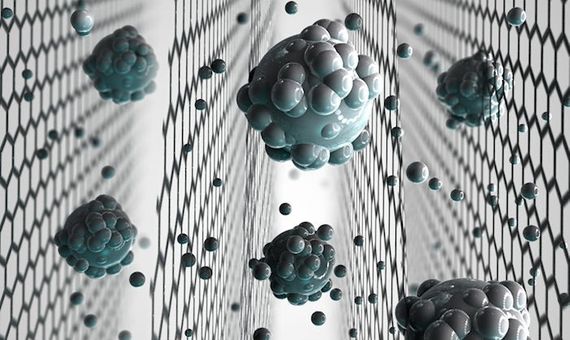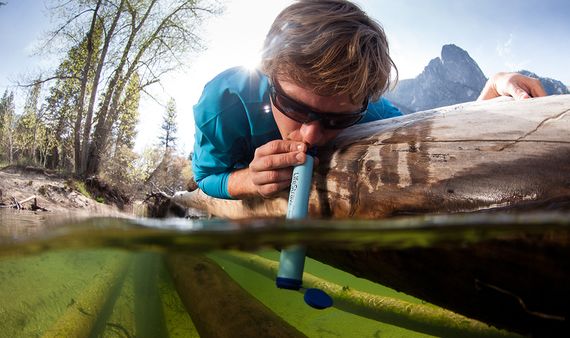If one day an extraterrestrial civilization ever visited us, it would probably decide that human beings are a study in contrasts: more than 3,6 billion people all over the world already own a smartphone, while some 2.2 billion still don’t have access to potable water in their homes. But despite the paradox, cutting-edge technology, and a resource as basic as clean water are not so far apart today; in fact, the former is managing to provide innovative solutions so that the latter can be more accessible in many places in the world where it is still not possible to open a tap and drink.
Currently, there are numerous technological proposals to expand access to drinking water, but they are often expensive or too complex for easy use on the ground. We review here some of the most recent and promising innovations.
VAPOUR CONDENSATION
Solar distillers for water purification have been used in the Americas since pre-Columbian times. The technique is simple: water is evaporated using solar energy and the vapor is condensed on a surface to collect the clean water. Today’s technology is providing solutions to this age-old method that improves its performance and efficiency.
One example is the solution created by engineers Qiaoqiang Gan, from the State University of New York at Buffalo, and Zongfu Yu, from the University of Wisconsin, and developed through their startup company Sunny Clean Water. The proposed system includes the use of carbon paper evaporators and condensers made of a material called polydimethylsiloxane, which even in full sunlight emit more energy than they absorb, reducing the temperature below the dew point to achieve vapour condensation.
WATER FROM DESERT AIR
In large regions of the planet the problem is not the contamination of water, but its absolute absence. According to the United Nations, more than 2.1 billion people live in arid regions that account for 41.3% of all the planet’s land, and it is foreseeable that this figure will increase with the desertification caused by climate change. To alleviate the water scarcity in these areas, there are systems such as fog condensers, but they require large catchment areas, energy sources or complex installations.
A team of researchers from the Massachusetts Institute of Technology and the University of California at Berkeley, led by chemist Omar Yaghi, has designed a passive system that extracts water from the driest air by consuming only solar energy, something that is rarely lacking in desert regions. The system is based on a new type of porous material called Metal-Organic Frameworks or MOF. Embedded between a solar panel and a vapour condenser, this material is able to collect 100 millilitres of water per kilo of MOF daily in an environment as dry as the desert of Arizona (USA), where the humidity of the airdrops to 8 % during the day.
In its original form, the drawback of the system was its price, as the MOF tested by the researchers used zirconium, an expensive metal. However, the same team has now tested an aluminium-based MOF that reduces the price from $160 to $3 per kilogram and in California’s Mojave Desert it has been able to produce 0.7 litres of water per kilogram of MOF per day, ten times more than the previous version. The new system includes a solar-powered fan to increase air contact with the material. Through his new startup Water Harvesting, Yaghi and his collaborators are working on a microwave-sized device capable of harvesting 7-10 litres of water per day, scalable to a system that will produce 20,000 litres per day, enough for a village’s consumption.
FRESH WATER FROM THE SEA
A large part of the world’s population lacks access to potable water despite living next to an immense ocean mass. However, the desalination of seawater is still an option of limited utility: the large plants that use filtration systems employing polymer membranes are expensive and inefficient because of their abundant energy consumption.
The science of new materials can also offer an alternative solution to current desalination plants. Scientists from the University of Manchester (United Kingdom) have created a graphite oxide sieve that retains the salts, allowing only water to pass through. The secret is in the tiny size of the pores, about 1 nanometre. Water molecules flow easily through it because they form a sort of train by means of their hydrogen bridges; however, the salts cannot pass through because they are surrounded by a shell of water molecules, with a total size exceeding that of the pores.

The advantages of the graphite sieve include the possibility of scaling it to any size and with the desired pore diameter, which permits the filtration of any contaminant present in the water. For the director of the project, materials physicist Rahul Nair, this new technology “will open new possibilities for improving the efficiency of desalination technology,” and will be especially useful in regions of the world where a large desalination plant is not affordable. In 2019, the National Graphene Institute at the University of Manchester began a collaboration with portable water filtration systems company LifeSaver to develop new water purification devices based on this technology.
POTABLE WATER FROM YOUR POCKET
Of the 2.2 billion people without safe running water in their homes, the United Nations estimates that more than 1.6 billion have to make long journeys outside their homes to collect water, while nearly 600 million drink from wells, streams, lakes or other sources that may harbour dangerous microbes. Every year 829,000 people die from diarrhoea caused by microbiological contamination of water.
In 2005, the Swiss company of humanitarian aid products Vestergaard Frandsen introduced a simple but ingenious system, Lifestraw, a plastic tube 22 centimetres in length and 3 in diameter that is used exactly like a drinking straw. Its filtration system eliminates protozoa and bacteria, and the most recent versions also filter chemical compounds and dissolved metals. Each unit can filter up to 4,000 litres of water, enough for one person’s consumption for three years.

Lifestraw’s award-winning technology is also marketed in bottle format and in systems for families and communities. All of them have already proven their usefulness in places like Haiti, Rwanda, Pakistan or Kenya, where these products have been distributed to alleviate the shortage of drinking water caused by earthquakes, floods or droughts. Interestingly, Lifestraw is also a camping accessory very popular in developed countries, as it’s a convenient and inexpensive alternative to traditional water treatment systems. With the income obtained from these sales, the company finances a program to take its filtration systems to develop countries.
THE BOOK THAT CLEANS WATER
Undoubtedly one of the most original, simple and practical systems to purify water is offered by the startup Folia Water, founded by chemist Theresa Dankovich and her husband: a book whose pages kill water microbes. The product had its origin in Dankovich’s doctoral thesis, which focused on the development of paper filters with silver nanoparticles that eliminate bacteria, viruses and other pathogens.

An essential part of the project was to give it the proper format to facilitate its use in deprived regions. This is how the “Safe Water Book” (also known as the “Drinkable Book”) was born, a book whose tear-out pages are the filters themselves, printed with captions in the appropriate language to facilitate their use and instruct their users on basic hygiene tips. Each book provides germ-free water for four years. Folia Water has already tested its system in numerous countries in Africa, Asia and Latin America, and has begun distributing its product in Bangladesh. The company’s goal is to provide access to clean water to one billion people at a cost of less than one cent a day.
RECYCLING WASTEWATER
Humans generate enormous quantities of wastewater. In a country like the US, each person discharges an average of 227 litres a day down the drains of bathrooms and kitchens and through the use of dishwashers and washing machines. In developed countries, this water is treated before being returned to nature, but there is increasing emphasis on the fact that it can also be recycled back into our taps. In fact, it is not just the water itself that is of interest; such is the quantity and variety of compounds contained in “used water,” as some experts prefer to call it, that it is also being recovered for various uses, including energy production.
In poorer countries, the situation is quite different, as the vast majority of wastewater is discharged untreated into the environment. Today there are countless initiatives to find ways to recycle this water to provide a safe supply to households. One system currently deployed in 30 countries is SunSpring Hybrid from Innovative Water Technologies, a self-contained solar- and wind-powered water purification station able to provide up to 20,000 litres per day for more than ten years.

On the other hand, a resource as abundant as sunlight can also be used to remove microbiological contamination from dirty water, thanks to ultraviolet (UV) light. Solar water disinfection (SODIS), which is as simple as exposing water to the sun in suitable containers, is a popular method recommended by the World Health Organisation. However, UV only accounts for 4% of the energy in sunlight. The advantage of the system developed by nanotechnologist Yi Cui at Stanford University is that it also harnesses visible light. It consists of a molybdenum disulphide membrane that reacts to sunlight when in contact with water to produce hydrogen peroxide, a known disinfectant that inactivates pathogens. The hydrogen peroxide then dissipates to leave only germ-free water.